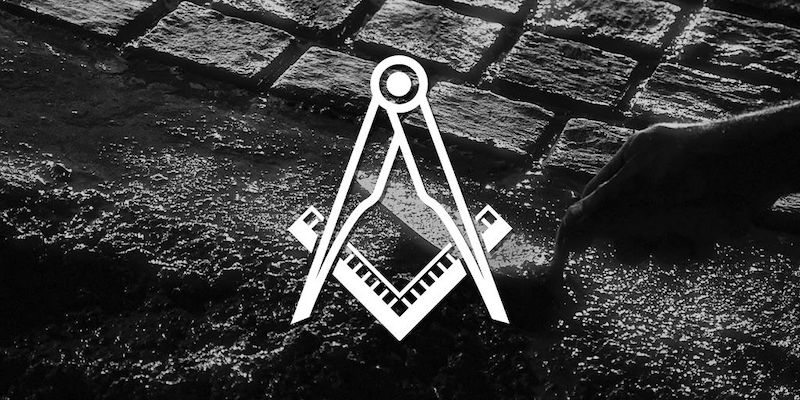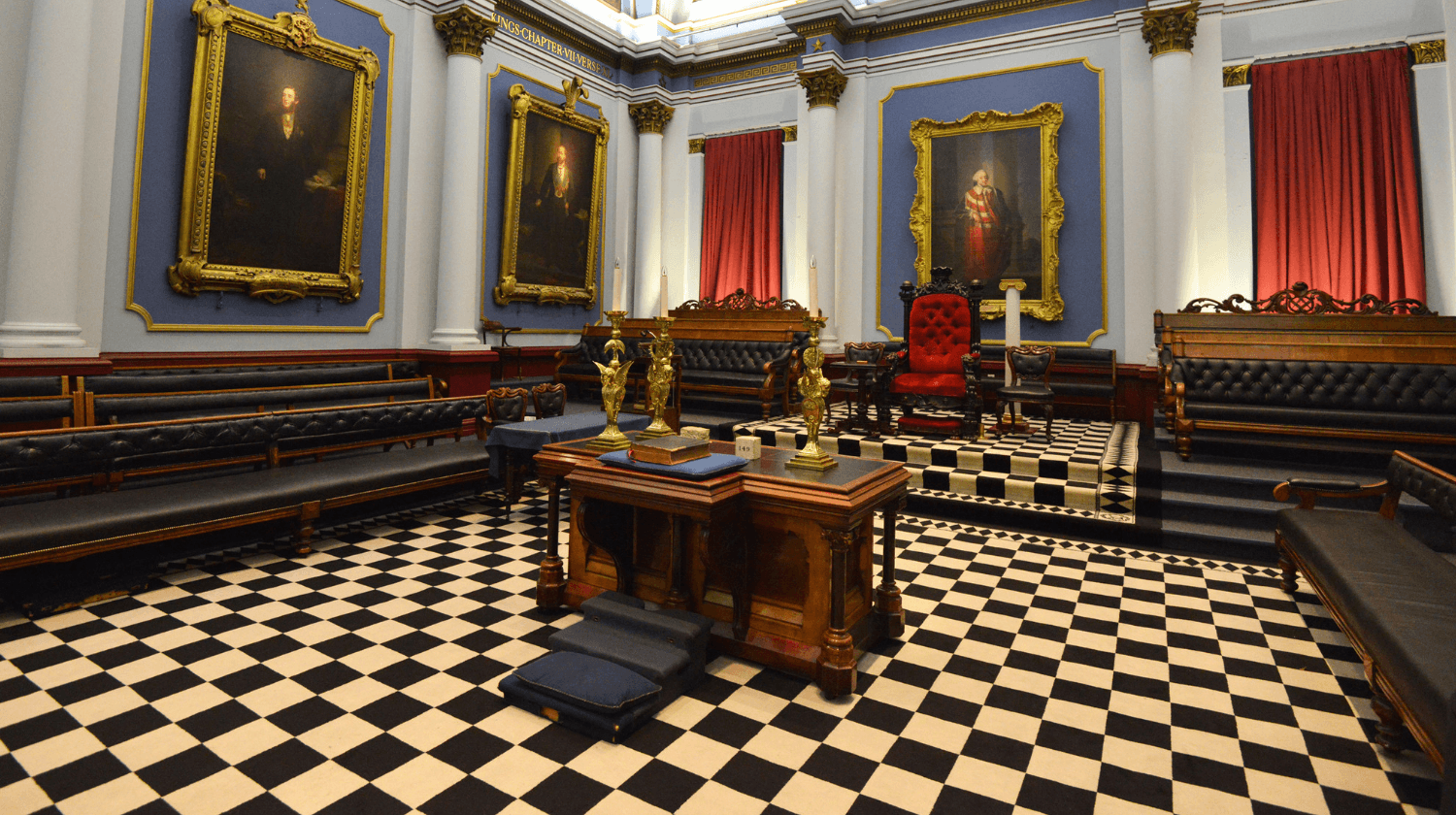- What are the Masonic Working tools?
- Why are they called as such – and
- What are the Working Tools of a Master Mason?
In this article, we’ll try to answer all of the above questions (and more) while reminding cautious not to give anything away.
This will just be a brief introduction and some things are left out on purpose. If you’d like to learn more about Freemasonry (and how to become one), we will also give you a few ideas/tips on how to become a Master Mason yourself.

What Are The Masonic Working Tools?
Generally, there are three degrees in Freemasonry;
- Entered Apprentice
- Fellowcraft, and
- Master Mason.
In each degree, particular instruments of the Operative Art are used to teach morality.
With these tools, a Masonry learns how to establish his spiritual temple as his predecessors. These implements are referred to as Working Tools.
There are nine Masonic working tools. These tools are grouped into three different categories, dependent on the degrees. Each tool symbolizes something different.
First-degree (Entered Apprentice) Working Tools are:
- the twenty-four-inch gauge,
- the common gavel, and
- the chisel*
Masons learn how to divide the day into three parts; serving God, for our neighbors, and ourselves. The common gravel symbolizes uprooting vices, evils, and superficial heart desires.
The chisel (mostly used in Canadian & English Grand Jurisdictions) shows how our brains can become more aesthetically toned through the endless conquest for knowledge.
The Second-Degree (Fellowcraft) Tools are:
- the Square,
- the Level, and
- the Plumb.
They are the implements of proof. The Square reminds Masons to ensure that their actions are correct through morals and values.
The level is a symbol of equality among brothers. All Freemasons share the same goal and will be judged by the same law.
The plumb stands for integrity. It emphasizes the importance of being just, honest, and upright in our lives – and lastly;
The Third-degree (Master Mason) Working Tools are;
- the Skirret,
- the Pencil, and
- the Compasses.
These are the tools of the plan, also known as the Master Mason Working tools.
What Are The Working Tools of a Master Mason?

The Mason Master has three working tools; the skirret and Pencil and compasses.
The skirret is an instrument which acts on a center pin and is used to draw a perfect line on the ground to mark the foundation of a structure.
In Freemasonry, it symbolizes the line of conduct that is followed in pursuit of the volume of the sacred law. To be Square, level, and upright, you must be straight. Straight is the shortest distance between two points.
In Masonry, you are taught that in dealings with The Supreme Being, the people surrounding us, and ourselves, we should opt for the straight path.
We should avoid the temptation of taking the easier path. Therefore, the brotherhood emphasizes practicing restraints to avoid deviating into temptations.
The straight path always leads one to the traveler to the desired goal in life. In Freemasonry, it is a reminder to stick to the purpose the organization has set.
The second tool is the Pencil, which is a standard tool in Stonemason’s work. The lead artist uses it to visualize the building in a draft for the workmen to follow.
In Freemasonry, God is the skillful artist and we are the workmen. The Pencil indicates that God has everything that people write down. On judgment day, we will be judged according to the conformity of the plan.
It is our work to derive meaning from each detailed design in our life. For us to carefully understand our life mission, we need to seek good lighting.
The light of a Master Mason light is visible. But, it is blocked by darkness. According to Freemasonry teachings, there is no greater darkness than evil, not realized.
The next instrument is one of the most famous symbols in Freemasonry; the compasses. It is used to remind Masons of the limits of good and evil, according to God’s impartial justice.
Obeying the set standards earns you a reward while disobedience causes punishments. We have to practice restraint to avoid living with respect and dying regretfully. We should circumscribe our passions and keep our utmost desires within bound.
The last tool is the Trowell. It symbolizes the need to spread brotherly love.
The theoretic cement represents the unity and bond among brothers. Master Masons are charged to practice a mode of conduct.
He is to be a force that helps to unite brothers and the divided units of society into the structure of a harmonious civilization.
How To Become a Master Mason
For you to become a Master Mason, you must have entered Apprentice Mason and passed the degree of Fellowcraft.
Therefore, a Master Mason is someone who has achieved his third Masonic degree.
Becoming a Master Mason may take months or even years. This depends on the Lodge Jurisdiction and country you are in.
For example, in the US, the average time it takes from initial joining the lodge and being awarded the Master Mason degree is four to eight months.

Step #1: Ask One To Be One (ASK12BE1)
The first step to becoming a Master Mason is by first applying to join Freemasonry.
Do this by contacting your local lodge and sending a petition. You will receive an invitation to a scheduled interview with the Freemason’s investigative committee.
Once you are accepted, the initiation process officially begins.
Step #2: Get Your First Degree
After successful initiation, you proceed to become an apprentice. This is the first degree.
You will be introduced to the basic principles of Freemasonry. Moral truths are imposed through the symbolic use of working tools.
You must become adept with the degree’s catechism before moving forward.
Step #3: Get Your Second Degree
Move up the ladder to the next degree, the Fellow Craft.
As you continue to familiarise yourself with the principles of the brotherhood, you will be tested on the knowledge you learned as an apprentice.
Once again, you have to memorize Fellowcraft catechism before proceeding to the third degree thoroughly.
Step #4: Become A Master Mason
After the successful completion of Fellowcraft, you are ready to become a Master Mason. A candidate must be fully capable in the ways and values of Freemasonry. The event is marked with a ceremony.
Related Questions: